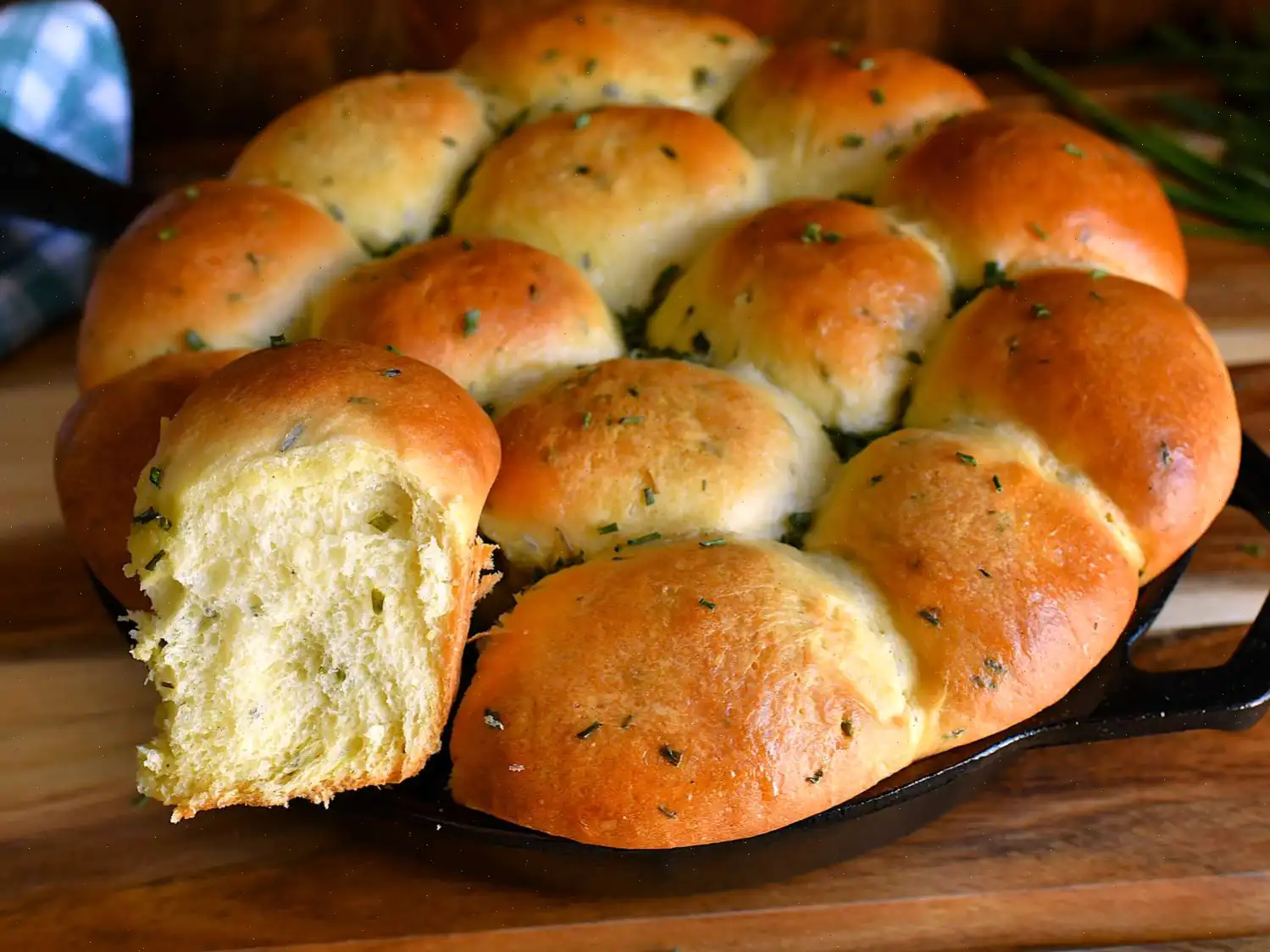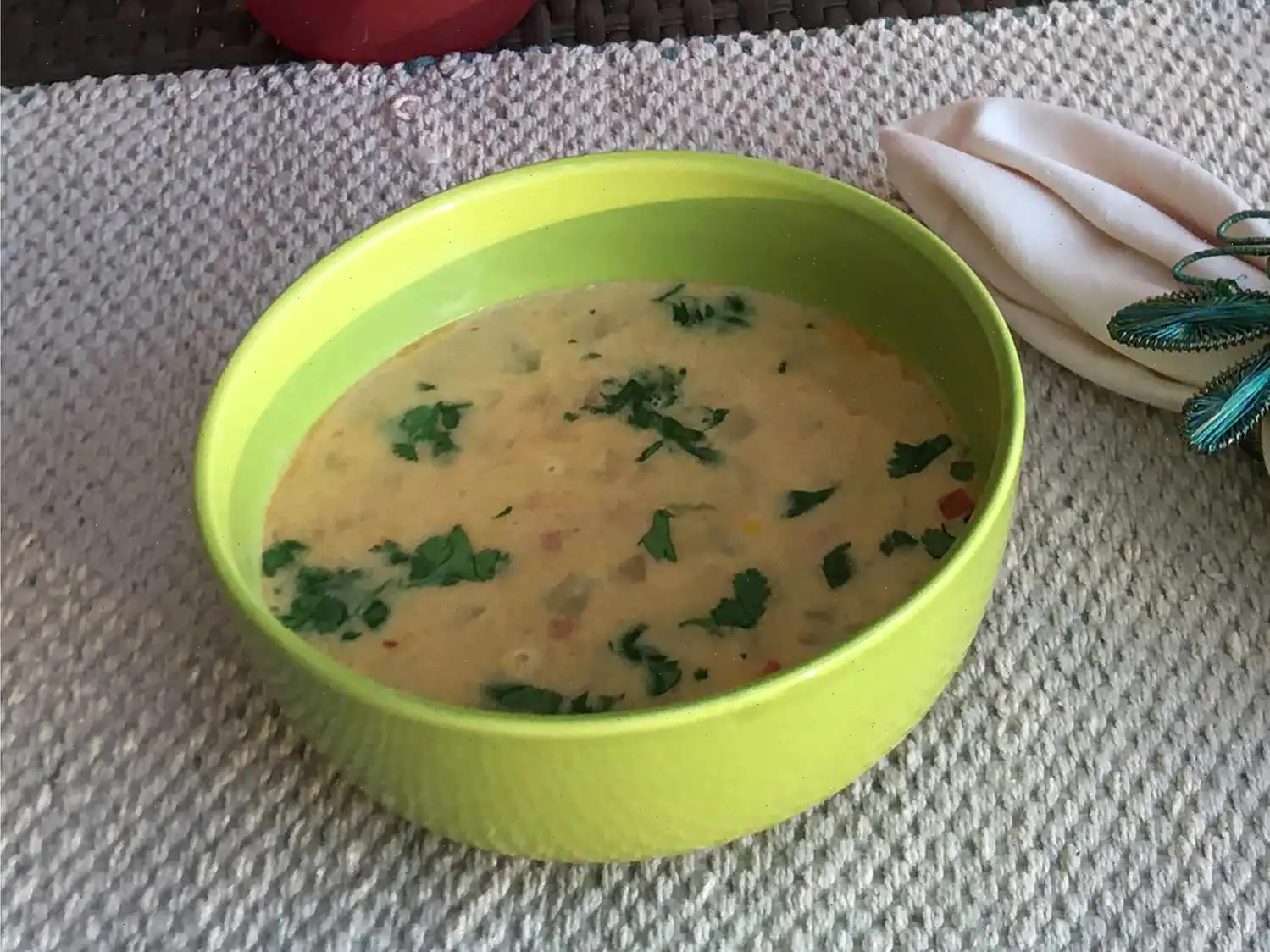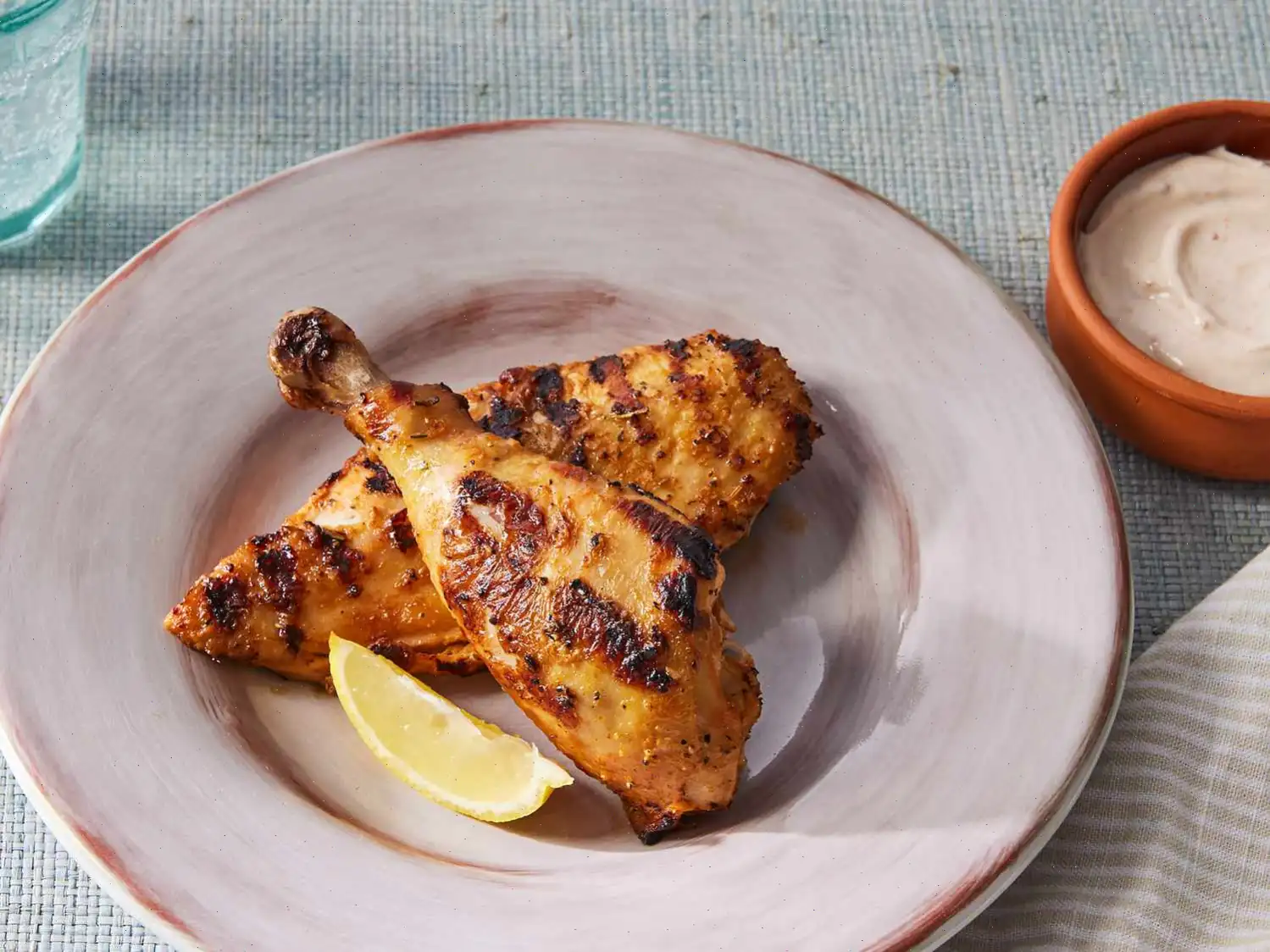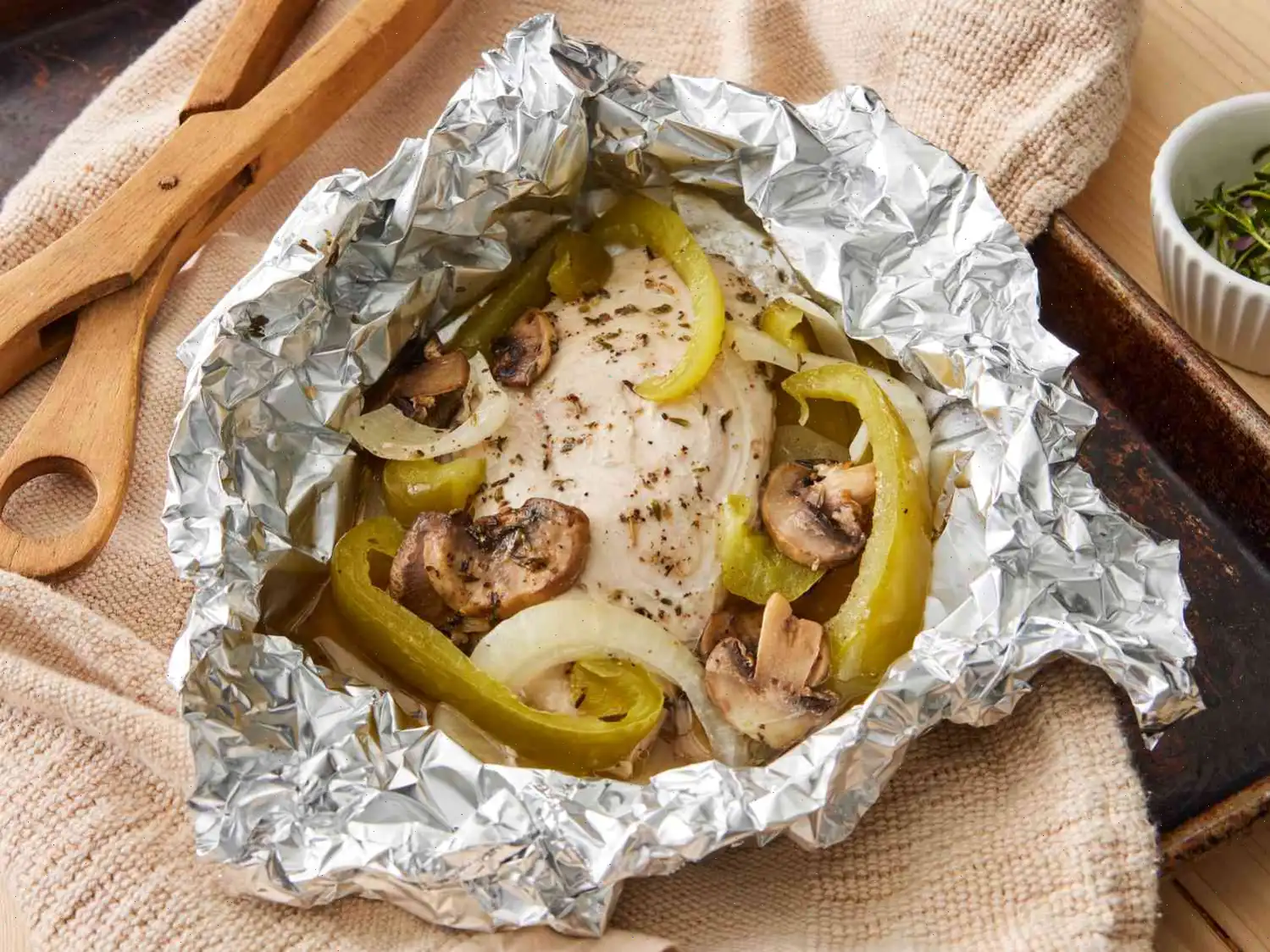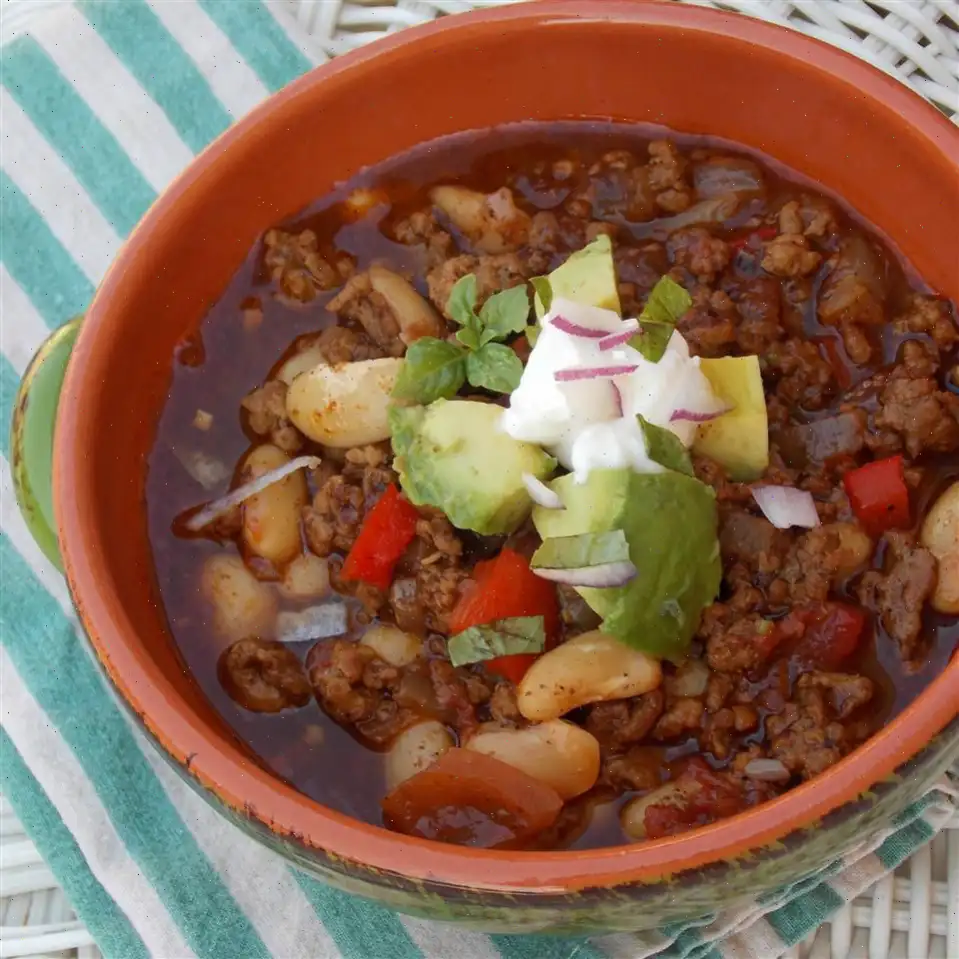
Sour Cream and Chive Skillet Dinner Rolls Recipe
Save to MyRecipes Tap "Save" to keep this recipe in MyRecipes, your new and upgraded digital recipe box for Allrecipes!
Ingredients
- 1/2 cup whole milk, warmed to 120 to 130 degrees F (49 to 54 degrees C)
- 1 pinch white sugar
- 2 1/2 teaspoons rapid rise yeast
- 3 1/2 to 4 cups all-purpose flour, or as needed
- 1/4 cup white sugar
- 3 tablespoons dried chives, plus more for sprinkling (optional)
- 1 3/4 teaspoons salt
- 1/2 teaspoon onion powder
- 1/4 teaspoon black pepper
- 1 cup full-fat sour cream, at room temperature
- 5 tablespoons extra-virgin olive oil, plus more as needed
- 2 large eggs, at room temperature
Directions
Start by stirring the warm milk, a pinch of sugar, and yeast in a small bowl. Let the mixture sit in a warm place for about 5 minutes, or until the yeast starts to foam.
In a large bowl, combine 2 cups of flour, 1/4 cup sugar, dried chives, salt, onion powder, and black pepper. Mix these ingredients together until evenly combined.
Add the yeast mixture, sour cream, olive oil, and eggs into the flour mixture. Stir everything together until combined. Gradually incorporate an additional 1 to 1 1/2 cups of flour until the dough begins to pull away from the sides of the bowl.
Transfer the dough onto a lightly floured surface and knead it for 10 to 15 minutes, until it becomes smooth and elastic. If the dough is too sticky, add more flour as needed. Once kneaded, cover the dough and let it rest for 10 minutes.
While the dough rests, grease a 10-inch cast iron skillet with some olive oil. After the dough has rested, divide it into 14 even pieces. Roll each piece into a ball and arrange them in the skillet. Place 10 rolls around the outer edge of the skillet and 4 in the center; they will be snug but should fit comfortably.
Cover the rolls loosely with a greased piece of plastic wrap. Let the rolls rise in a warm, draft-free place for 1 to 2 hours, or until they have doubled in size.
Preheat your oven to 350F (180C). Once the rolls have risen, remove the plastic wrap. Place the skillet in the oven and bake the rolls for 25 to 30 minutes, or until they are golden brown on top and sound hollow when tapped.
If desired, you can brush the tops of the rolls with extra olive oil or melted butter, then sprinkle with a few more chives. Let the rolls cool slightly before serving.
Cooks Note
If you are using regular yeast, instead of rapid-rise or bread machine yeast, heat the milk to 110F (43C). You can also use fresh chives if available and substitute melted butter for the olive oil if you prefer.
Nutrition Facts (per serving)
- Calories: 562
- Total Fat: 10g (13% DV)
- Saturated Fat: 3g (15% DV)
- Cholesterol: 37mg (12% DV)
- Sodium: 286mg (12% DV)
- Total Carbohydrate: 101g (37% DV)
- Dietary Fiber: 4g (13% DV)
- Total Sugars: 5g
- Protein: 15g (30% DV)
- Vitamin C: 0mg (1% DV)
- Calcium: 50mg (4% DV)
- Iron: 6mg (33% DV)
- Potassium: 185mg (4% DV)
The Story Behind Sour Cream and Chive Skillet Dinner Rolls
Sour cream and chive skillet dinner rolls are a modern twist on traditional American yeast rolls, blending soft, pillowy texture with the subtle tang of sour cream and the delicate aroma of chives. The origins of these rolls can be traced back to mid-20th century home baking traditions in the United States, when cooks began experimenting with enriching doughs using dairy products such as sour cream, yogurt, or buttermilk. This innovation was part of a broader movement to create richer, more flavorful breads that could complement both everyday meals and festive occasions.
Regional Variations and Preferences
While these rolls are broadly popular across the United States, regional variations often reflect local ingredients and baking techniques. In the Midwest, bakers tend to use full-fat sour cream and fresh chives, emphasizing a moist, dense texture ideal for hearty family dinners. In contrast, coastal regions sometimes substitute olive oil for butter and incorporate herbs such as parsley or thyme alongside chives, creating lighter rolls with subtle Mediterranean influences. The use of a cast iron skillet is especially favored in Southern kitchens, where it promotes even browning and a slightly crisp crust while maintaining a soft interior.
Distinguishing Features Compared to Similar Breads
These skillet dinner rolls differ from classic dinner rolls primarily due to the addition of sour cream, which not only enhances flavor but also creates a tender crumb. Unlike brioche or challah, which rely heavily on butter and eggs for richness, sour cream and chive rolls achieve a delicate softness without being overly sweet. The incorporation of chives adds a savory note that sets them apart from plain or slightly sweetened rolls. Additionally, baking in a cast iron skillet allows the rolls to rise closely together, resulting in pull-apart layers with a golden, slightly textured exterioran experience distinct from rolls baked individually on a sheet pan.
Where They Are Commonly Served
These rolls are a versatile side dish suitable for a variety of meals. They are often served alongside hearty soups, roasted meats, and holiday feasts, where their buttery, tangy flavor complements savory main courses. Many families also enjoy them at brunch, pairing the rolls with eggs, smoked salmon, or cheese spreads. Due to their visually appealing pull-apart presentation and aromatic topping, they are a favorite choice for casual gatherings, potlucks, and Sunday dinners, making them both a functional and festive addition to any table.
Interesting Facts and Culinary Insights
One fascinating aspect of these rolls is the role of sour cream in yeast dough. Its acidity slightly strengthens the gluten network, creating a softer, more elastic dough while subtly enhancing the fermentation process. Another fun fact is that using a cast iron skillet was originally a practical choice: it distributes heat evenly and helps the rolls cook uniformly, which was particularly useful before modern ovens became standard. Some home bakers even experiment with adding small amounts of grated cheese or garlic to the dough, giving a savory depth that further distinguishes these rolls from other yeast-based breads. Finally, while chives are traditional, substitutions like scallions or fresh herbs can adapt the recipe to local tastes without sacrificing its signature texture and softness.
FAQ about Sour Cream and Chive Skillet Dinner Rolls Recipe
Comments
Eric Anderson
10/26/2022 03:35:12 PM
I'm relatively new to baking bread, but I decided to give this recipe a try and I couldn't be happier with the outcome! These rolls were a hit with everyone. The touch of sour cream added a delightful tanginess that really elevated the flavor. I opted to use my stand mixer with the dough hook instead of kneading by hand, which made the process a breeze - the dough was ready in just 7-8 minutes on the lowest setting. I had to switch to a larger cast iron skillet as the recipe didn't quite fit in a 10-inch one, but they turned out beautifully (see photo). This recipe is definitely a keeper!


